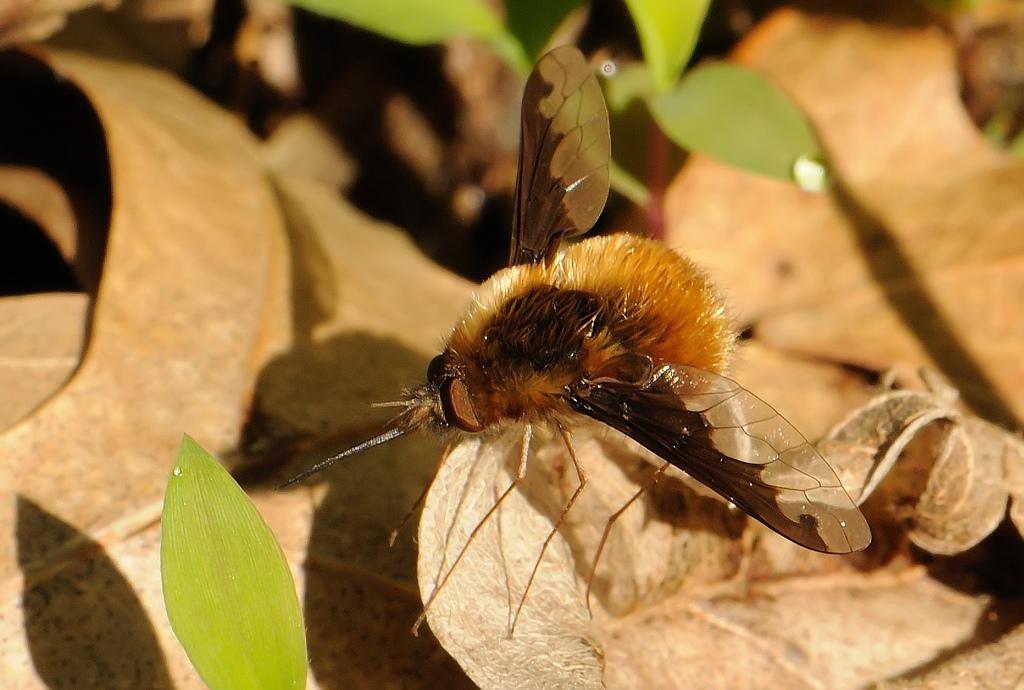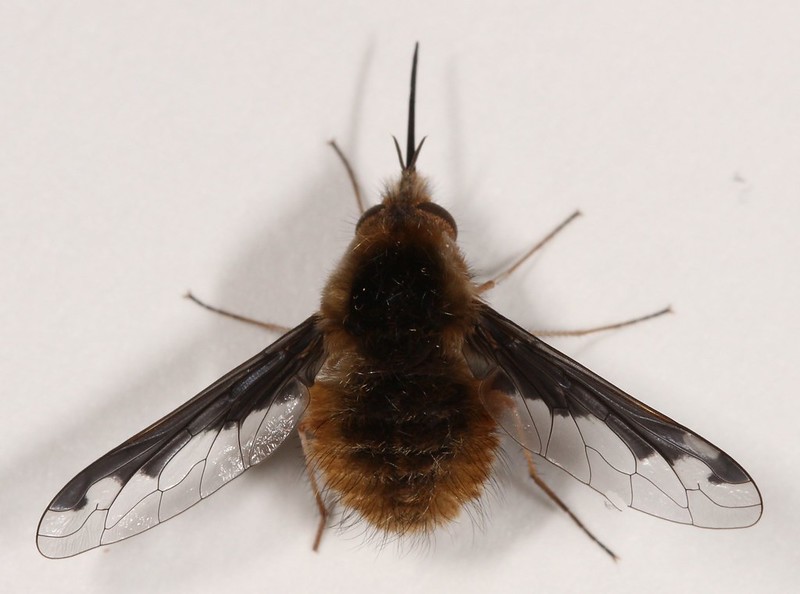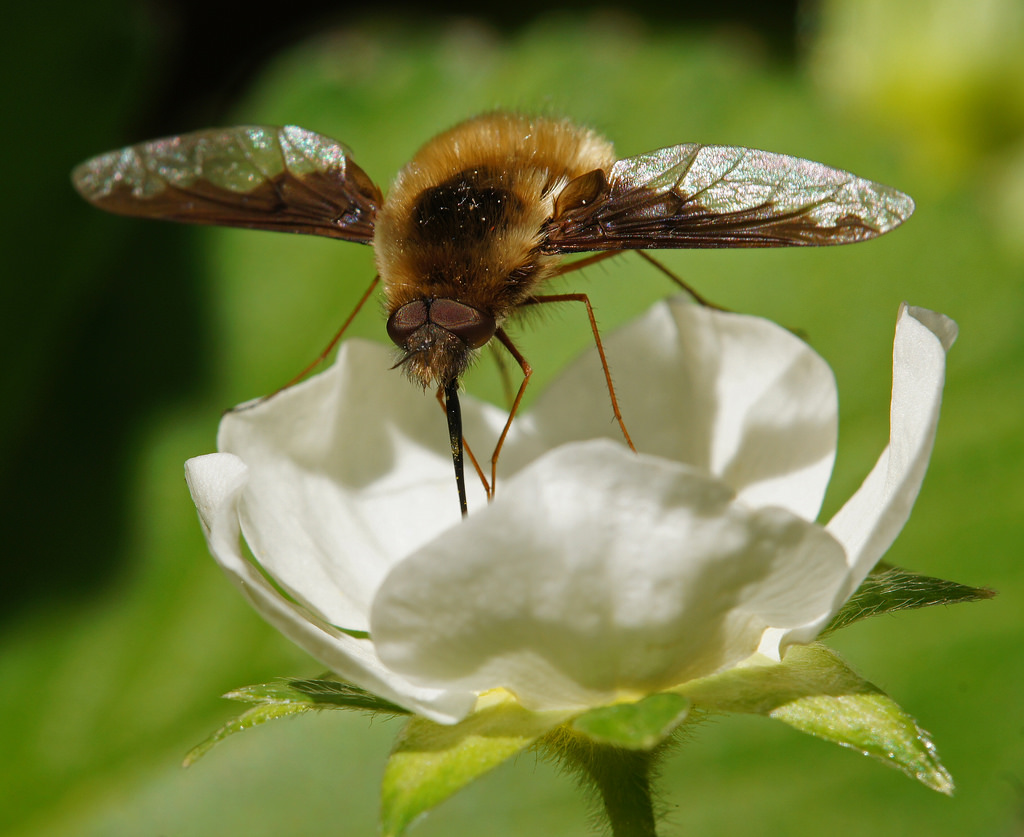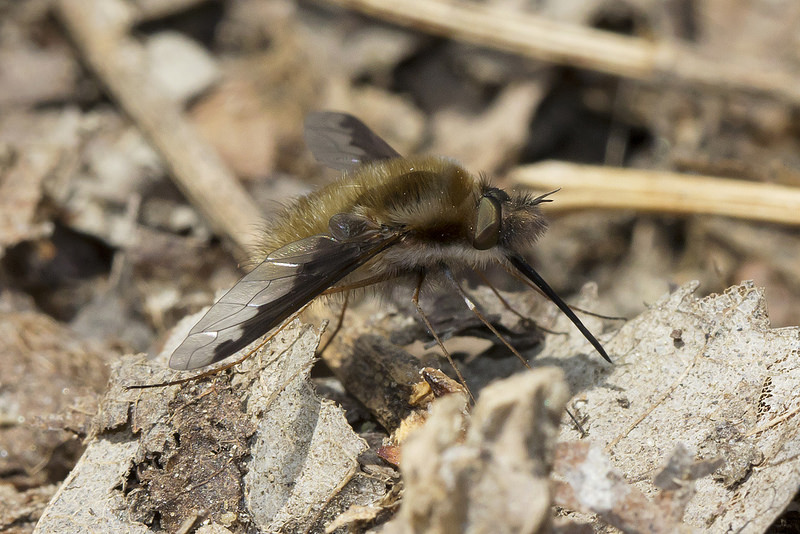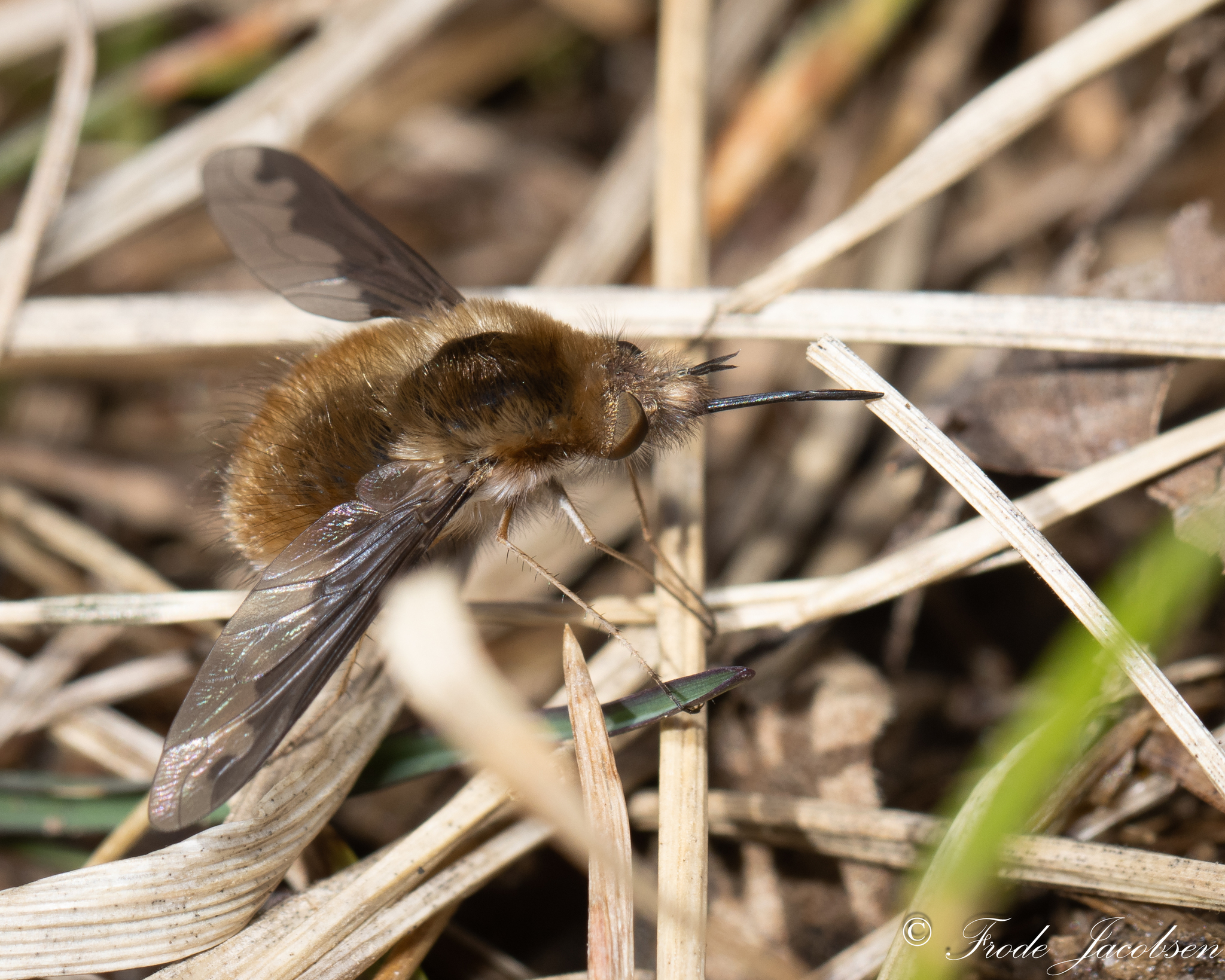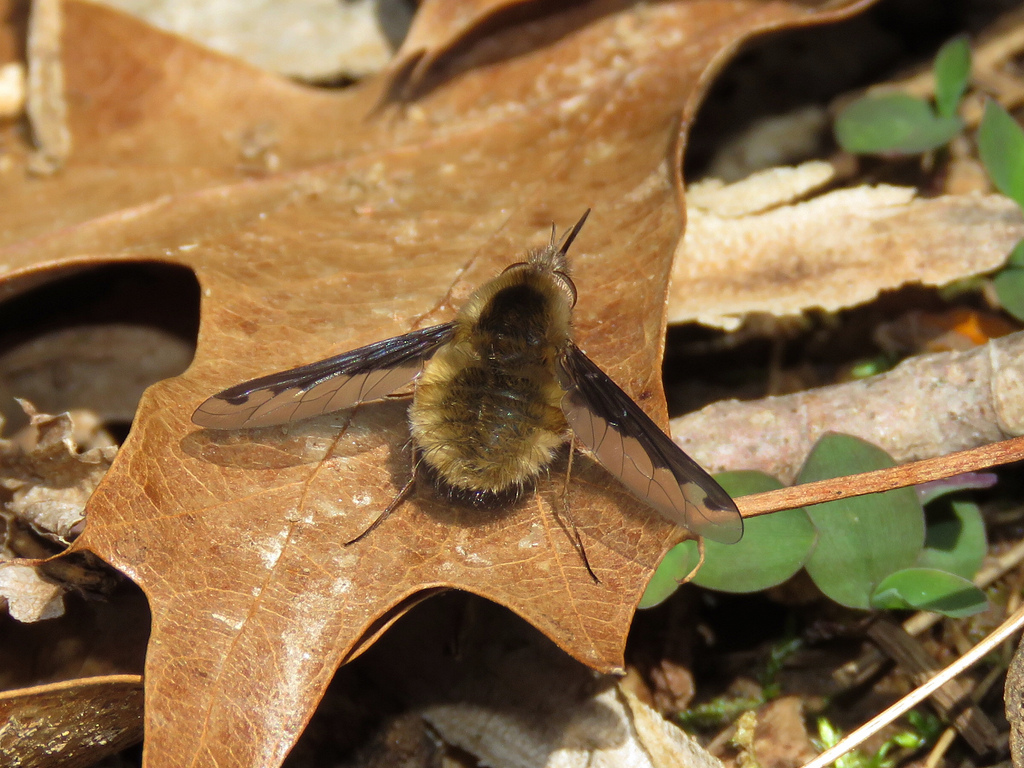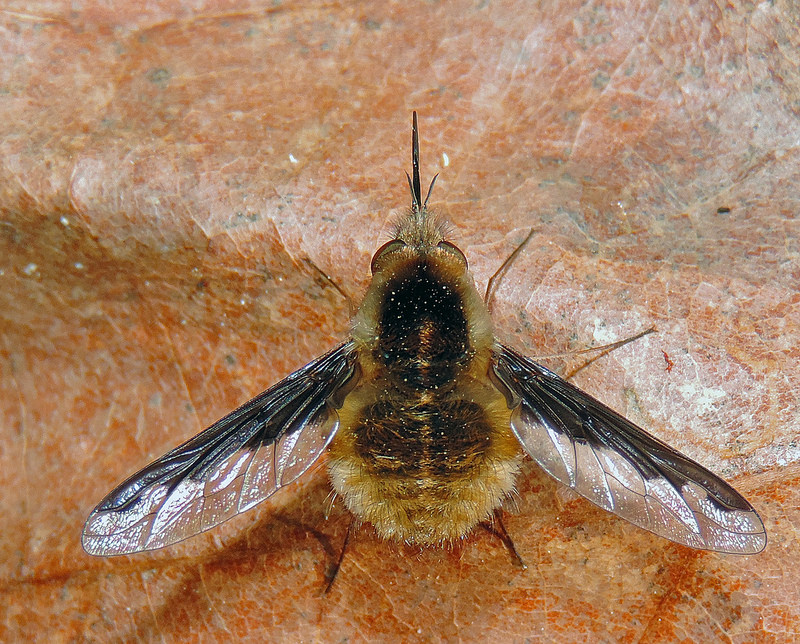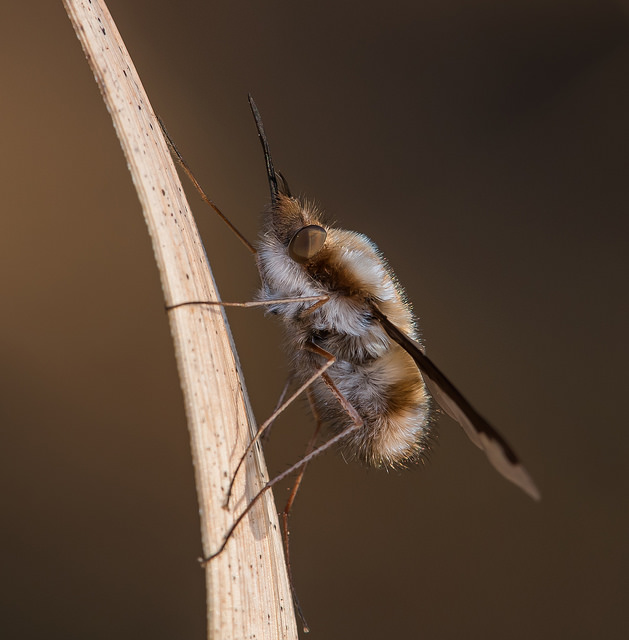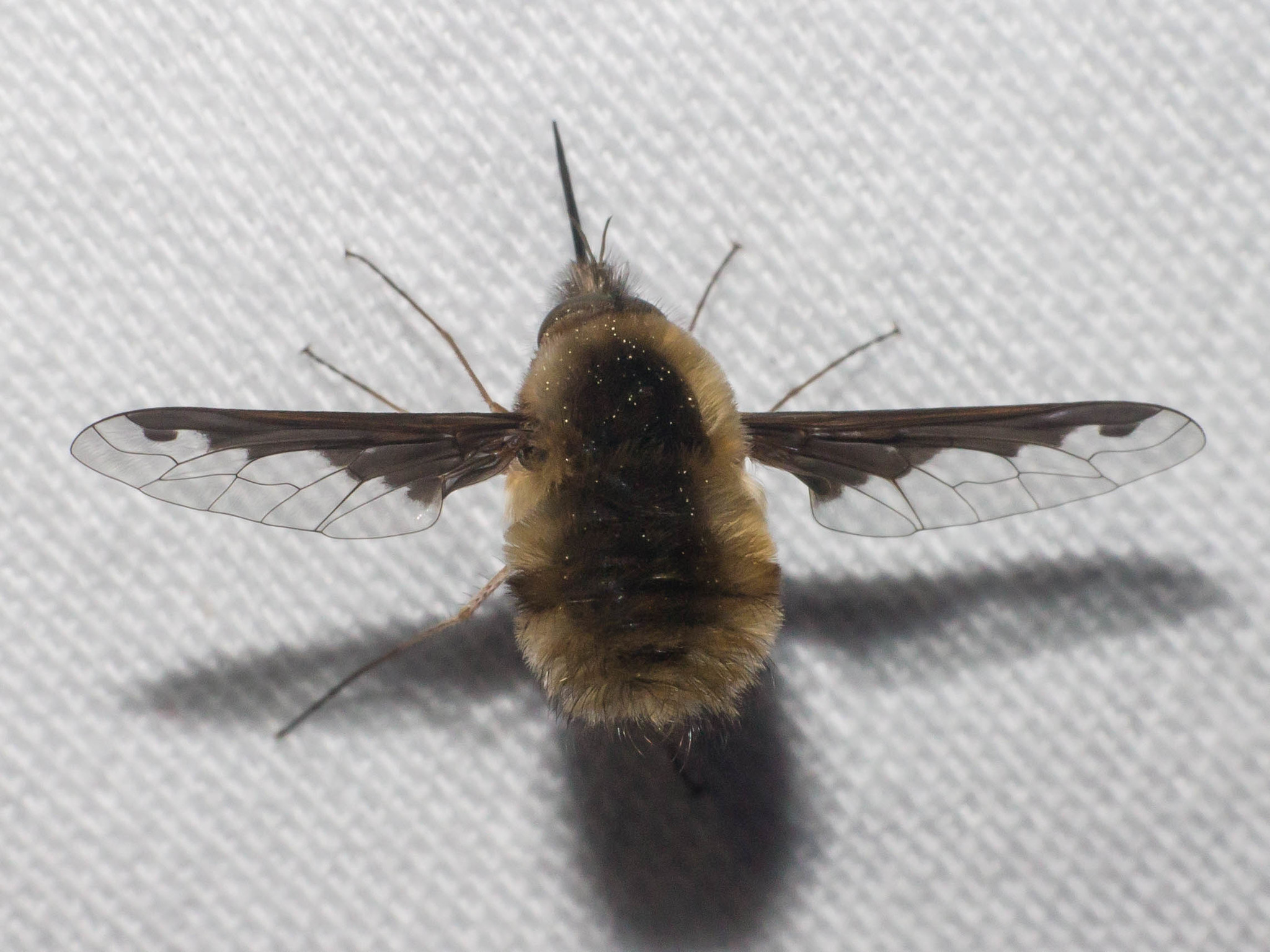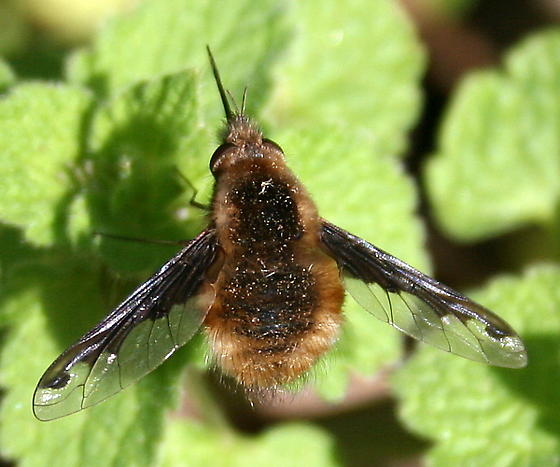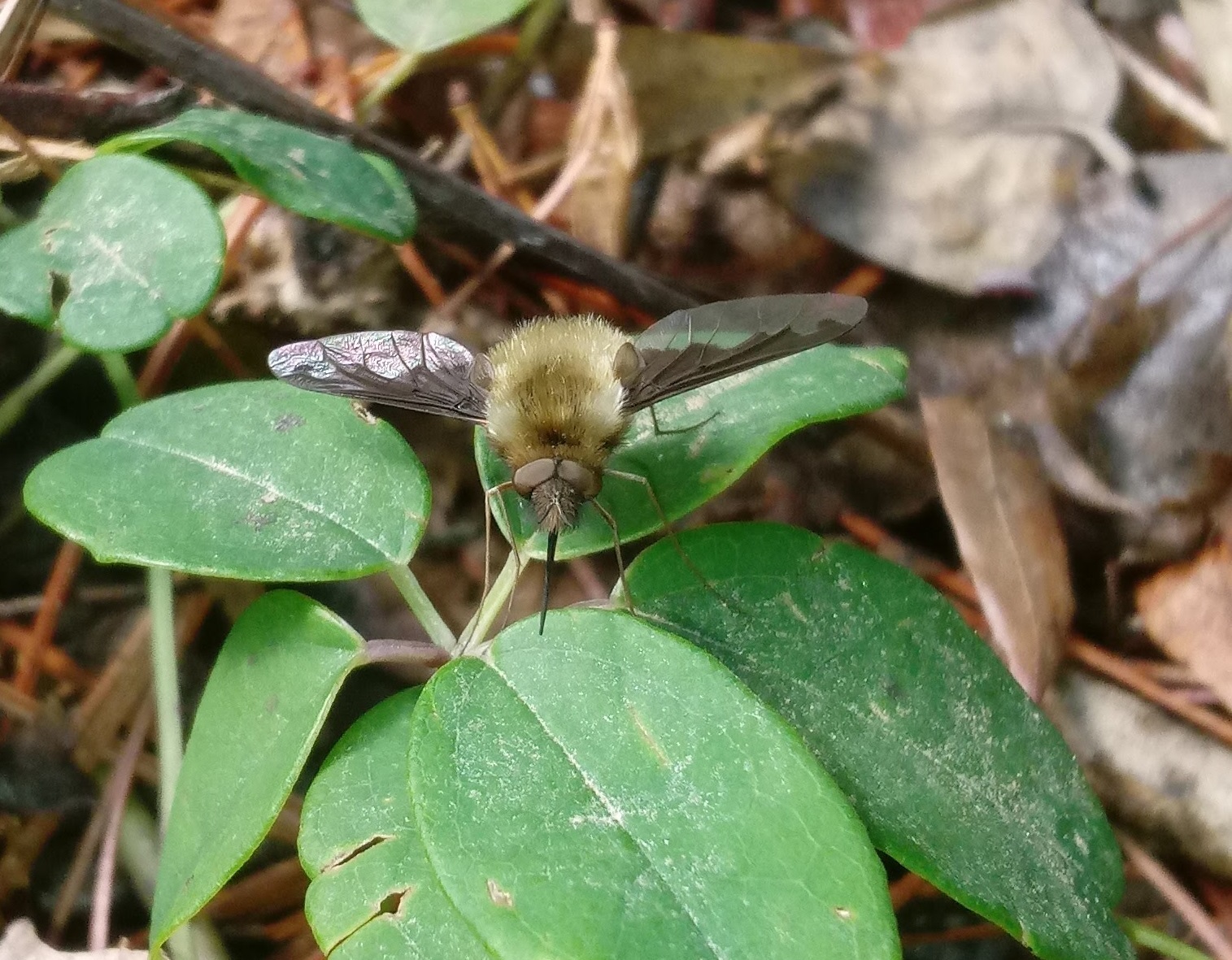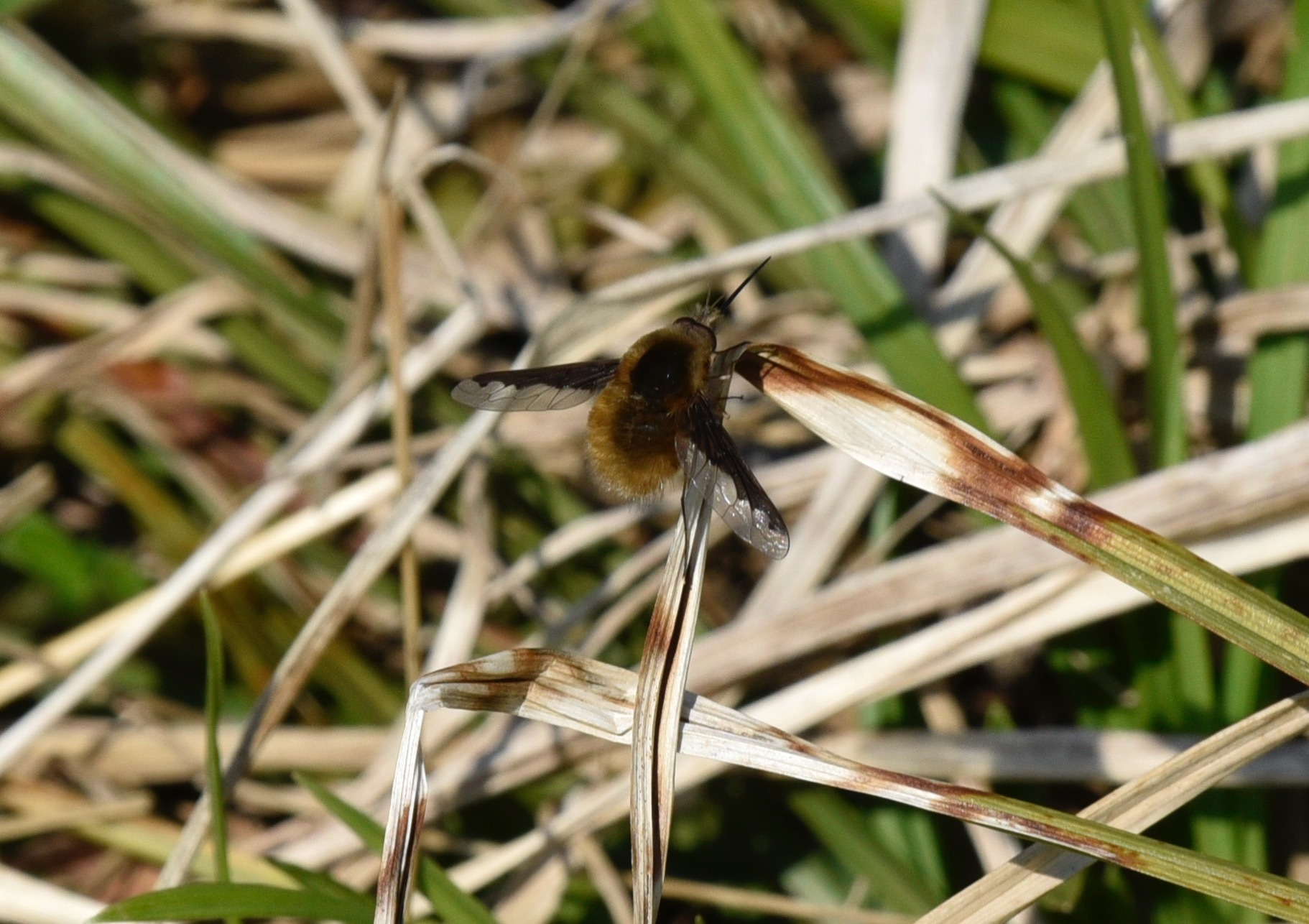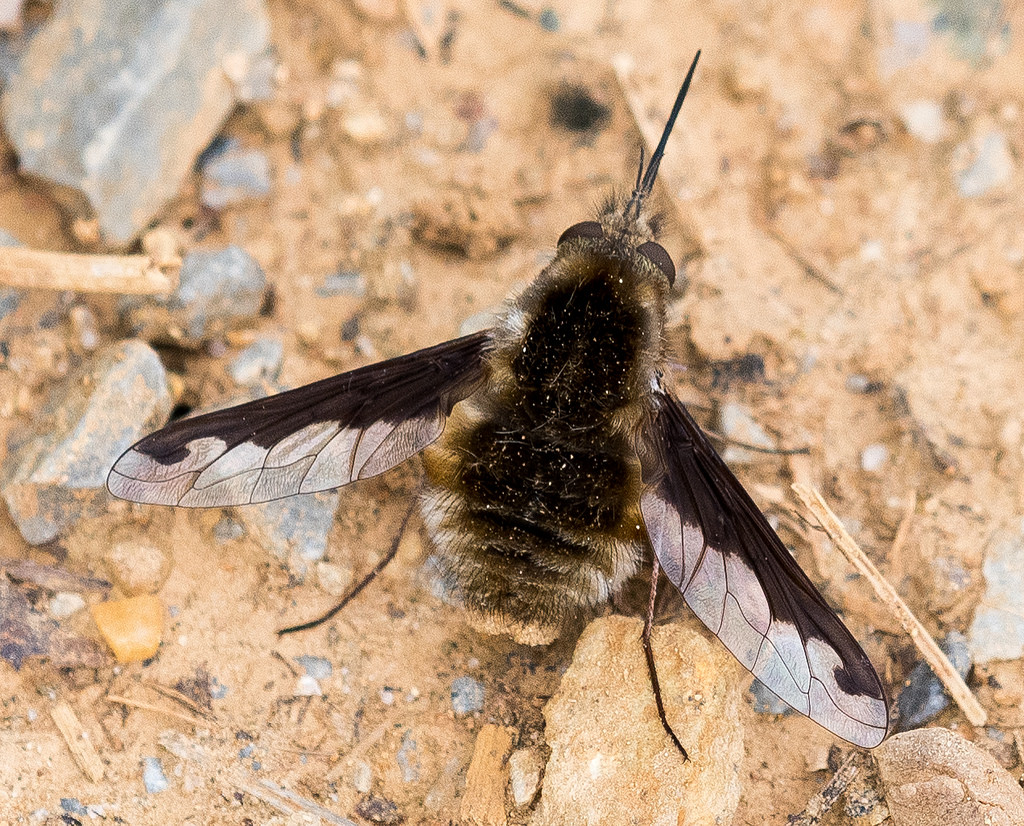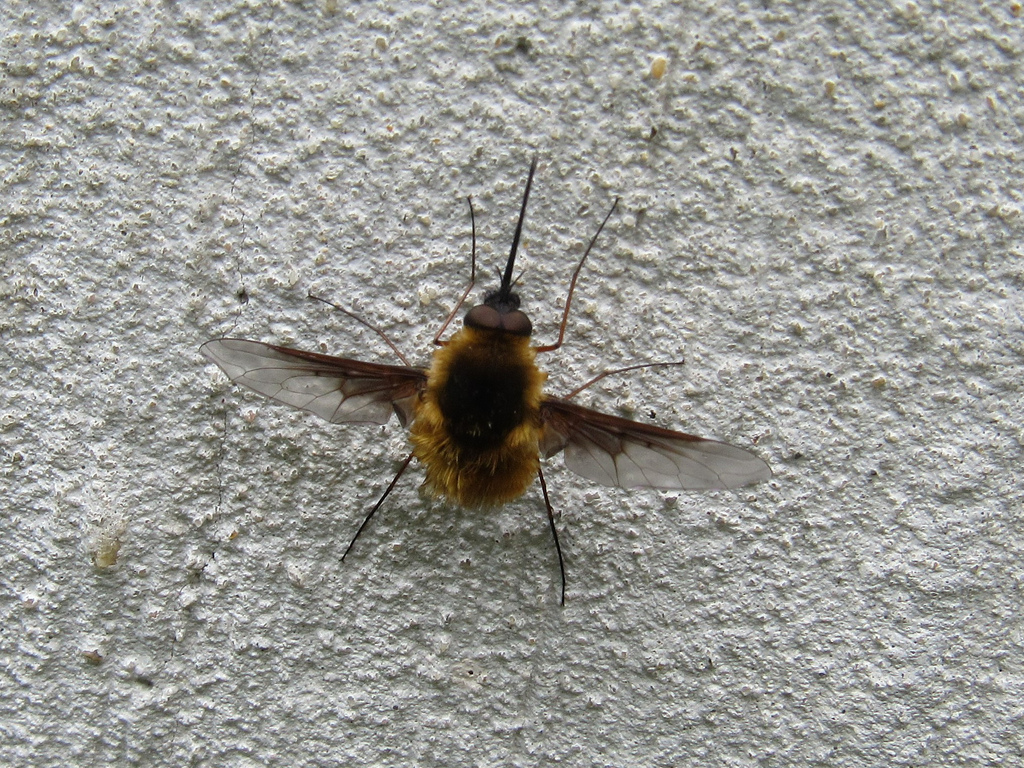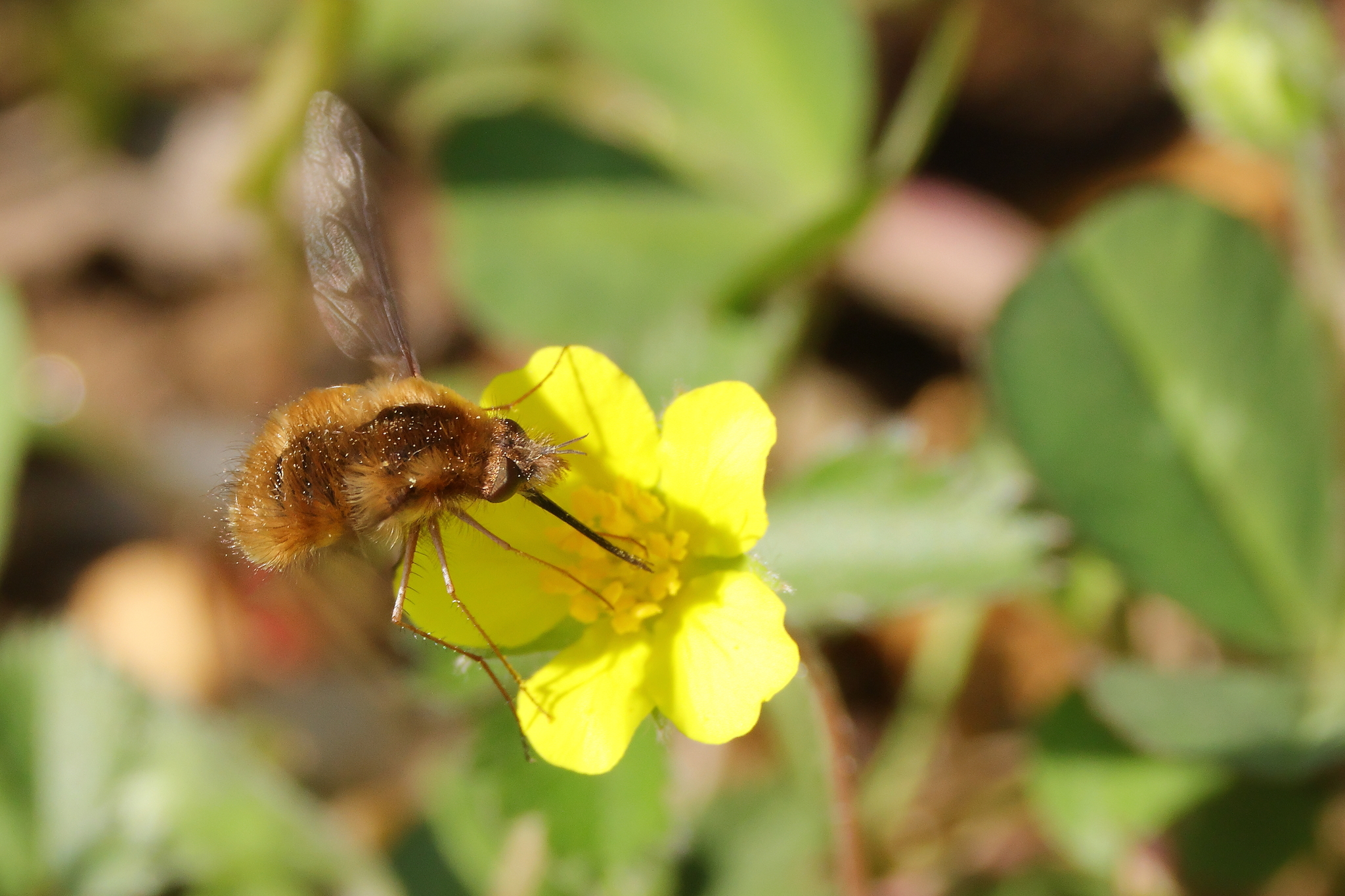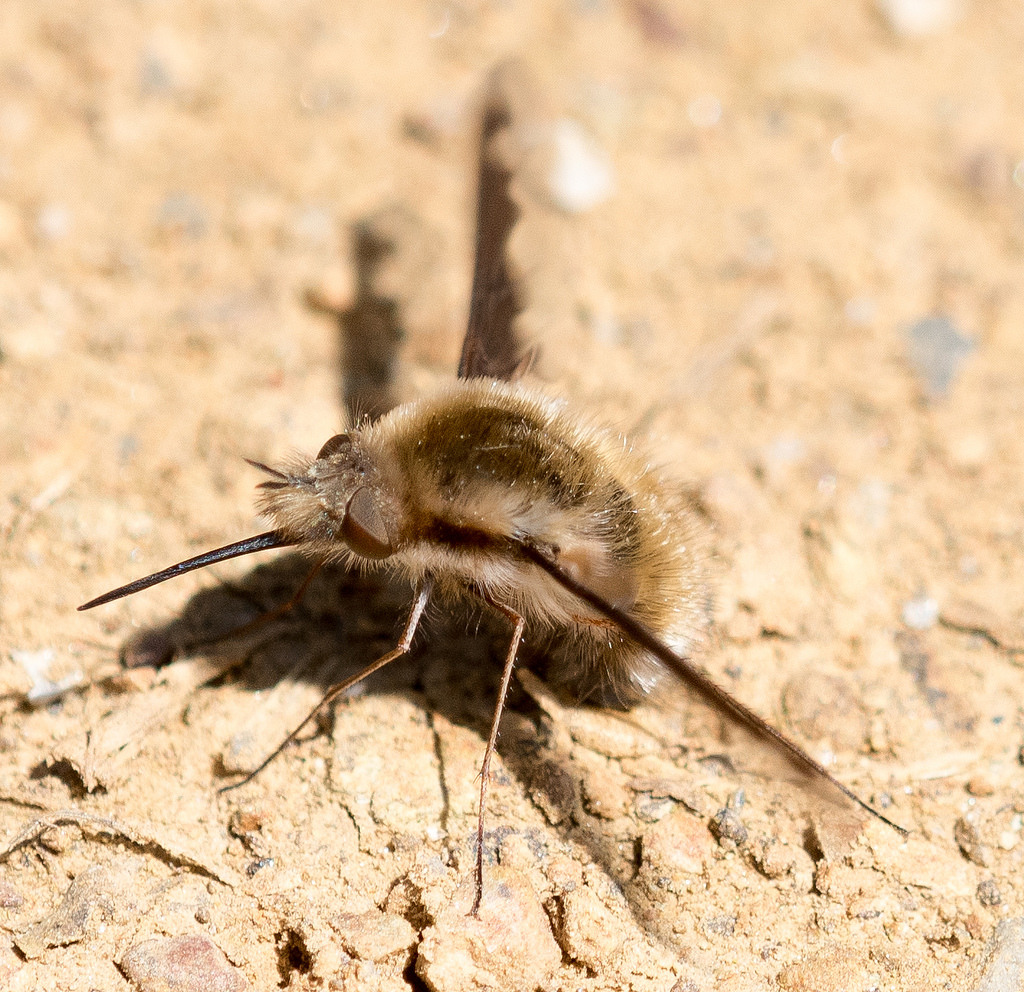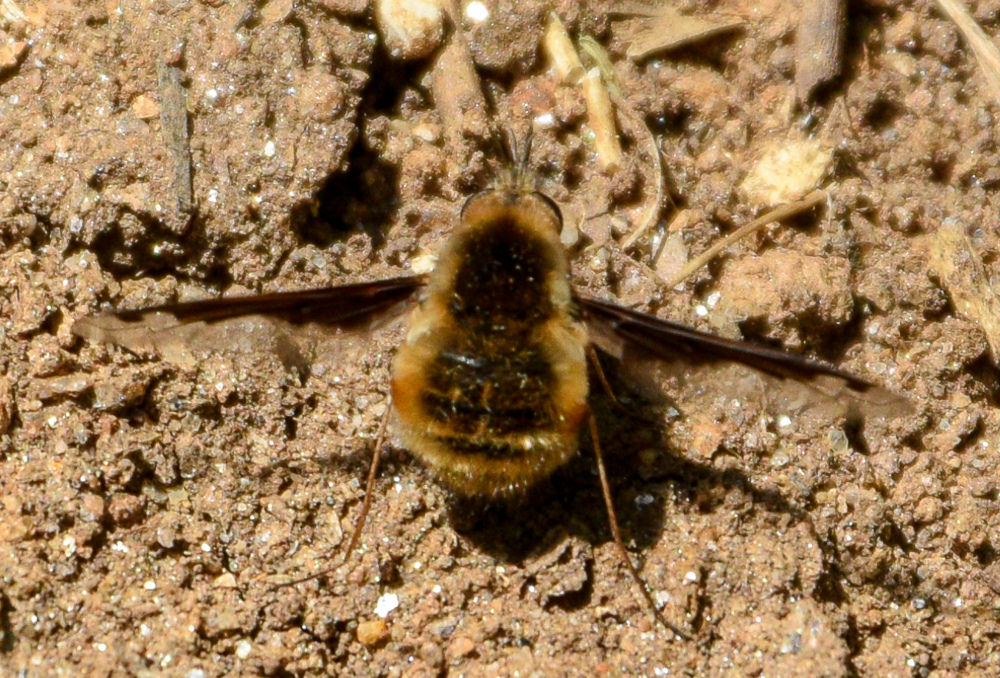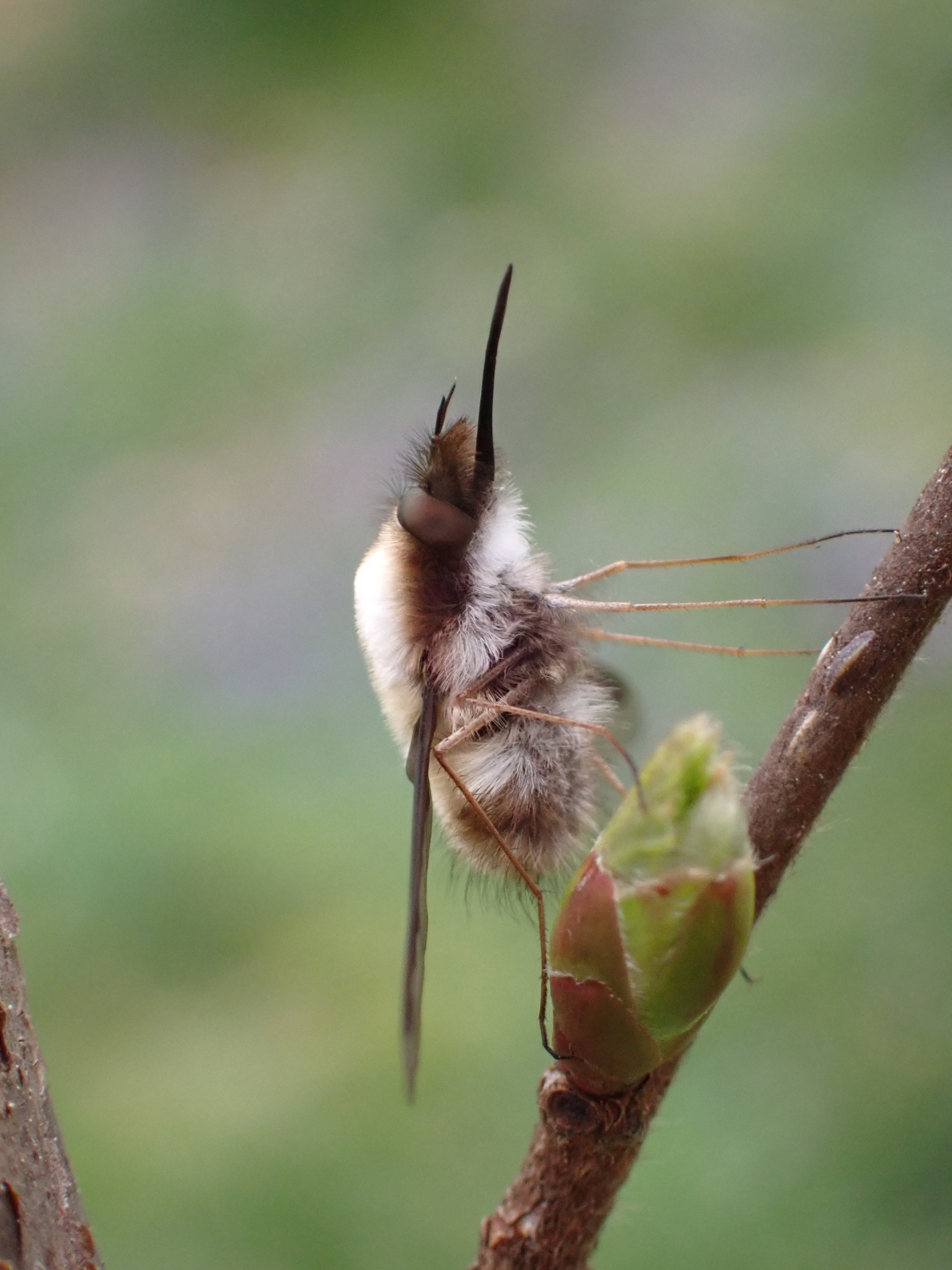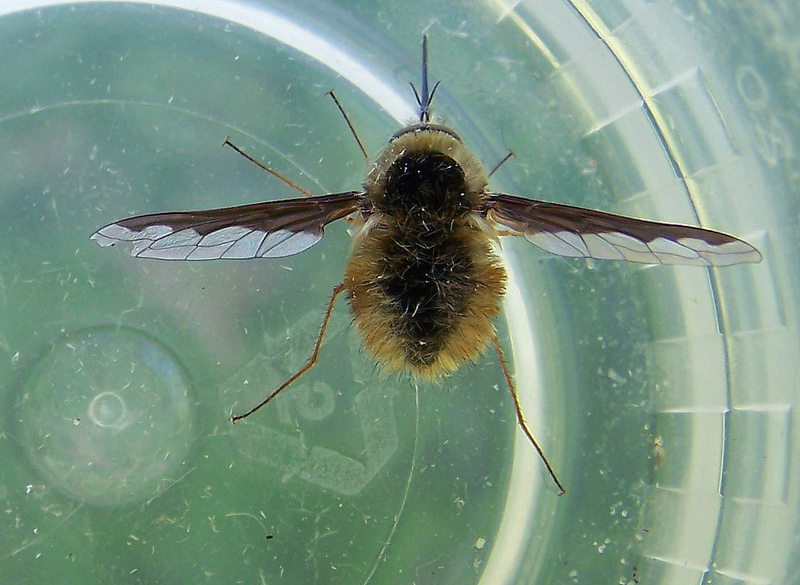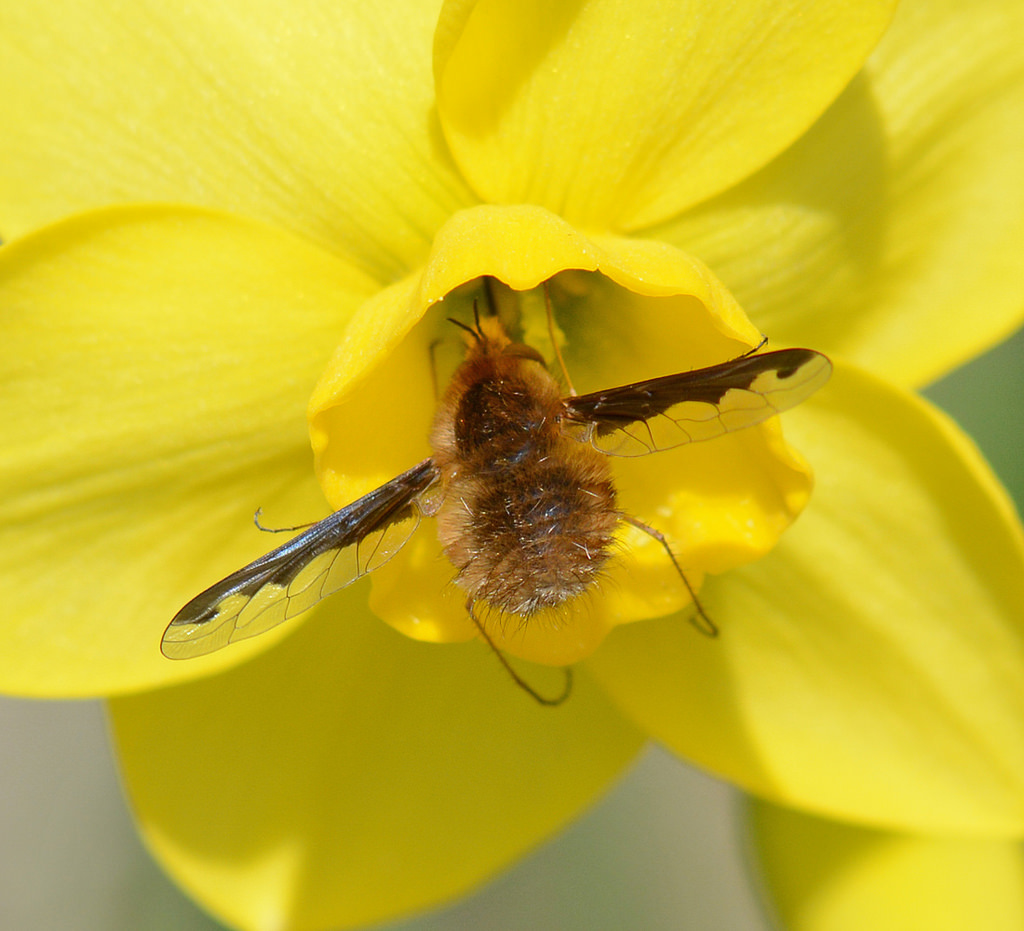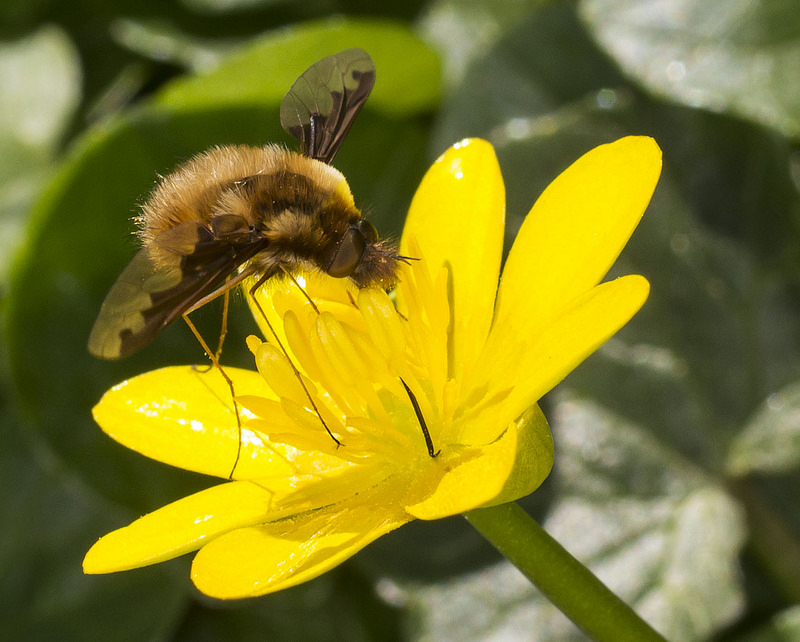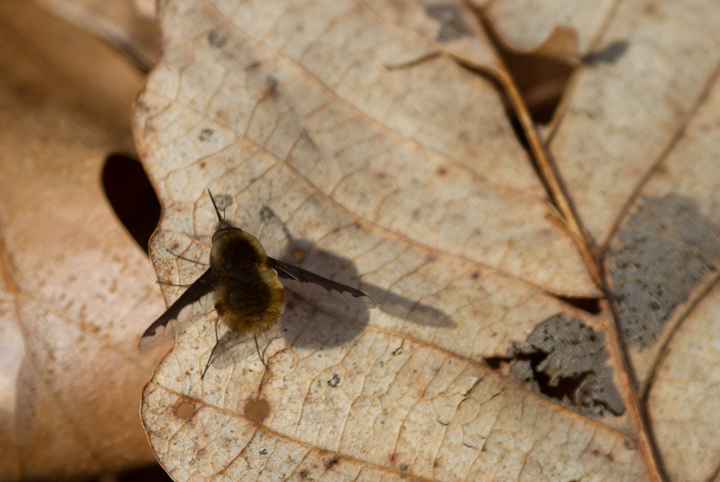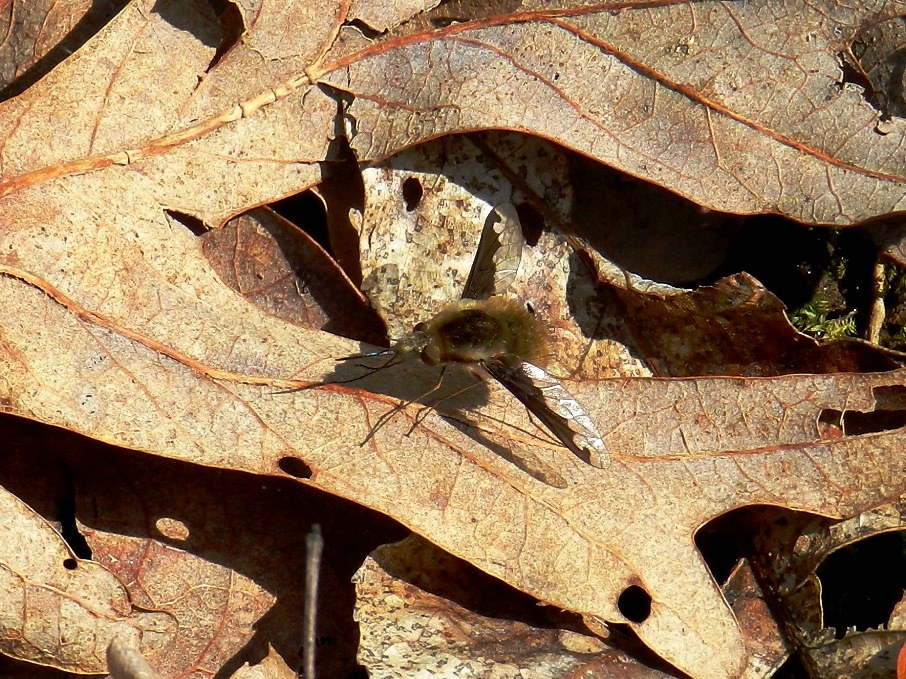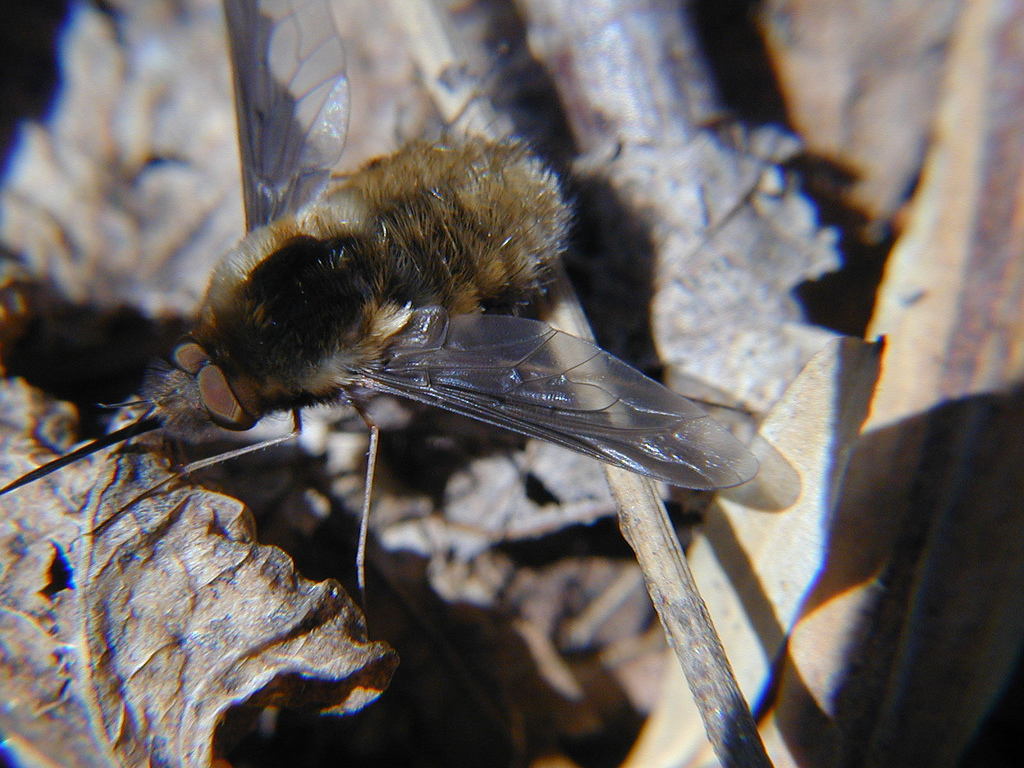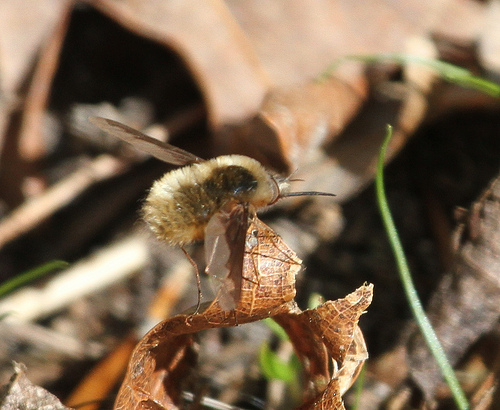

























A very common Holarctic species, this large, fuzzy bee fly is conspicuous in early spring, especially near solitary bee nests. The precise pattern of the dark markings on the wing is distinctive and diagnostic for the east.
The larvae of the species are parasitoids of the larvae of solitary bees (e.g., Andrena). According to BugGuide (2021): "Females rest on bare ground and collect fine sand and dust in the long tufts of hair at the end of their abdomen, called dust baskets. After finding an entrance to ground nesting bee tunnels, she hovers above the nest and flicks her eggs through the dust baskets, covering them with dust and fine sand grains, making the eggs invisible at the entrance to the bee nests. She may also lay eggs on flowers visited by the bees, and the larvae will hitch a ride back to the bee’s nest."
Also per BugGuide: "Very mobile after hatching, larvae move quickly down the tunnel of ground nesting bees, find and feed on stored food in cells and later, feed on the bee larvae itself. Larvae pupate in the tunnel and hatch out the next spring."
There are 194 records in the project database.
| GA | AL | WA | FR | CL | MO | HO | BA | BC | HA | CE | PG | AA | CV | CH | SM | KE | QA | CN | TA | DO | WI | SO | WO |

